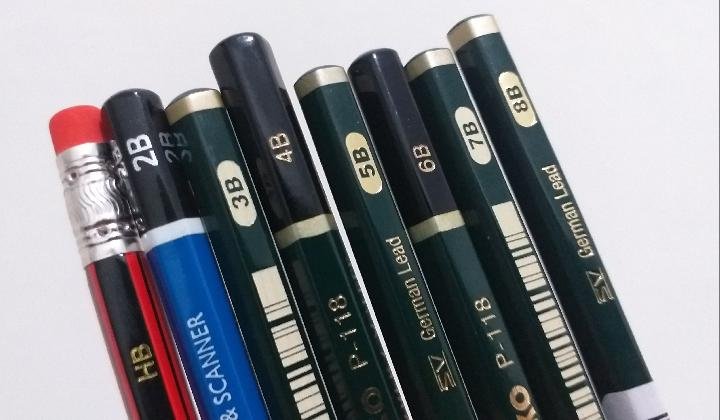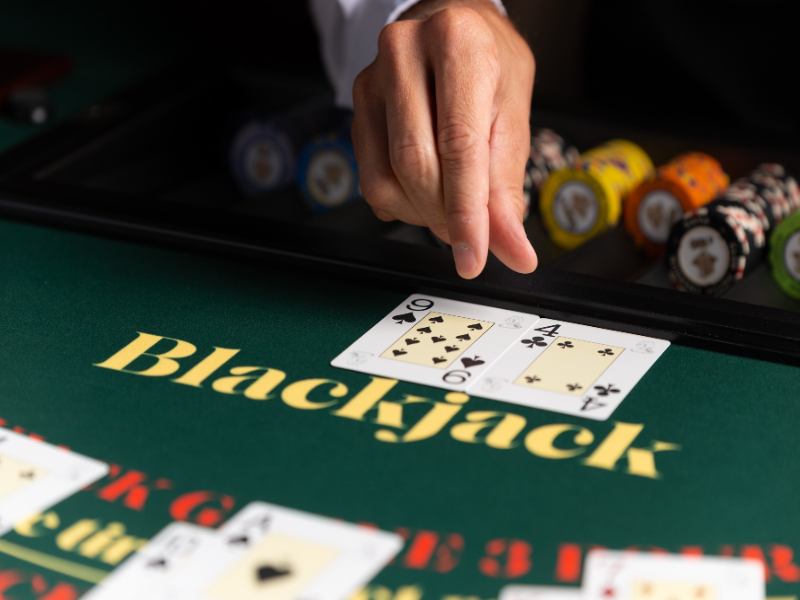
Choosing the right pencil for initial sketches is essential, and jenis pensil yang cocok untuk membuat sketsa awal adalah pensil dengan kode. These pencils, typically graded by numbers and letters, provide varying softness and hardness, important for achieving precise lines and shading.
For beginners and seasoned artists alike, understanding these grades can significantly enhance the sketching process, allowing for greater creativity and expression. Dive into the world of sketching with the perfect pencil in hand, ensuring your artistic journey starts on the right note.
Jenis Pensil yang Cocok untuk Membuat Sketsa Awal adalah Pensil dengan Kode
When it comes to creating initial sketches, the type of pencil you choose can significantly influence your creative process. The phrase “pensil dengan kode” refers to a coding system that helps identify different types of pencils based on their hardness or softness. Understanding this coding can empower artists and sketchers to select the right pencil for their needs. In this article, we will explore the various types of pencils suitable for initial sketches, focusing on the pencil grading system, how different grades affect your drawing, and tips for choosing the best pencil for your project.
Understanding Pencil Grading: The Basics
Pencils come in a variety of grades, each designated by a specific code. This coding usually consists of a combination of letters and numbers, which indicate the hardness or softness of the lead. The most common grading system includes:
– **H Grades**: These pencils are hard and produce lighter marks. They are excellent for fine lines and detailed work. The higher the number before the ‘H’, the harder the pencil. For example, 2H is harder than H.
– **B Grades**: These pencils are soft and create darker, richer lines. They are ideal for shading and expressive sketches. The higher the number before the ‘B’, the softer the pencil. For instance, 4B is softer than 2B.
– **F Grade**: This stands for “fine point” and is somewhere in between H and B pencils.
The scale typically ranges from 9H (very hard) to 9B (very soft), allowing artists to select a pencil that fits their particular sketching style.
Choosing the Right Pencil for Initial Sketches
Selecting the appropriate pencil for sketching is crucial, especially if you’re just starting to develop your ideas. Here are some pointers to help you decide:
1. Consider Your Style of Drawing
Your artistic style plays a significant role in determining which pencil to use:
– **Detailed Line Work**: If you tend to create intricate designs or want precise outlines, opt for H or F graded pencils. They allow for fine detail without smudging.
– **Shading and Depth**: If your sketches require shading or a broader range of values, B pencils are more suitable. They blend well and can create darker tones.
2. Experimentation is Key
Don’t hesitate to try out different pencils. Each artist develops a preference for specific pencils over time. Here are some tips for experimentation:
– **Test Different Grades**: Purchase a variety pack that includes different grades from H to B. This way, you can easily see which feels best for your sketches.
– **Mix Grades**: Use a combination of hard and soft pencils within the same artwork to create contrast. For example, you might sketch outlines in H grades and use B grades for shading.
3. Pencil Type Matters
Not all pencils are created equal. Here’s a closer look at common types:
– **Graphite Pencils**: The standard choice for sketching. They are versatile and easy to erase.
– **Colored Pencils**: If you want to add color to your sketches, colored pencils can be a great addition. They come in various grades, similar to graphite pencils.
– **Mechanical Pencils**: These offer consistent line widths and are great for detailed work. However, they may not provide the same shading capability as traditional pencils.
Why Pencil Choice is Important for Sketching
Choosing the right pencil is important for more than just aesthetic reasons. It can also affect your workflow and the ease of executing your ideas. Here’s why it matters:
1. Comfort and Control
Using a pencil that feels good in your hand and suits your drawing style can improve your overall experience. It helps you maintain better control over your lines and allows for a smoother flow while sketching.
2. Impact on Creative Expression
Different pencils allow for varied levels of expression. A softer pencil can create bolder, more dynamic marks, while a harder pencil results in finer, more delicate strokes. The ability to choose your pencil based on the desired effect enhances your artistic output.
3. Adjusting to Mediums and Surfaces
Different surfaces (like textured paper vs. smooth paper) react differently to pencil types. You might find that a softer pencil smudges more on smooth paper but creates beautiful shading on textured surfaces. Understanding how your pencil interacts with your medium can improve your sketches significantly.
Tips for Maintaining Your Pencils
To ensure your pencils perform well for a long time, it’s essential to maintain them properly. Here are some easy ways to keep your pencils in good condition:
1. Keep Them Sharp
A sharp pencil allows for accurate lines and details. Use a quality sharpener or a craft knife to keep your points fine.
2. Store Properly
To prevent breakage, store your pencils in a case or holder. This keeps them from getting damaged and tangled up with other art materials.
3. Avoid Excessive Pressure
When sketching, avoid pressing too hard on the pencil. This can break the lead and alter its performance. Instead, let the weight of your hand guide your strokes.
Best Practices for Initial Sketching
As you begin sketching, keep these best practices in mind to enhance your initial sketches:
1. Start Light
Begin your sketches with lighter strokes using your H or F grade pencils. This way, you can make changes easily without leaving harsh lines.
2. Build Layers
Gradually increase the pressure and switch to B pencils for shading or defining shapes. Layering your pencil strokes creates depth and dimension in your sketch.
3. Keep it Loose
Don’t strive for perfection in your initial sketches. Allow yourself to make mistakes. A loose and carefree approach can often yield more dynamic results.
Exploring Different Styles of Sketching with Pencils
Sketching is a multifaceted art form. Different styles can further influence the type of pencil you use. Here are some popular sketching styles and their pencil recommendations:
1. Gesture Drawing
This quick sketching style captures the essence of a subject. Use softer pencils (B grades) to create dynamic lines rapidly, which allows for flexibility and movement in your work.
2. Architectural Sketching
For precise and clean lines, you may prefer harder pencils (H grades). They provide the accuracy needed for architectural details and clean edges.
3. Portraiture
Portrait artists often blend various grades. Start with H or F for outlines and switch to softer B pencils for shading facial features. This layering technique can create lifelike portraits.
Recommended Pencil Brands for Sketching
Choosing a quality pencil can elevate your sketching experience. Here are some well-known brands that produce excellent pencils for sketching:
- Faber-Castell – Known for their high-quality graphite pencils and smooth application.
- Staedtler – Offers a variety of pencils suitable for all sketching techniques.
- Dixon Ticonderoga – A classic brand that provides reliable pencils, great for beginners.
- Prismacolor – Best known for colored pencils, but also offers great graphite options.
In summary, the right pencil can make a significant difference in your initial sketches. By understanding the coding system, experimenting with various types, and applying best practices, you can enhance your drawing experience. Remember that sketching is not just about technique; it’s about expression and creativity. So grab your pencils, explore, and enjoy the artistic process!
Jenis Pensil untuk Menggambar dan Bagaimana Cara Menggunakannya? | Step-2
Frequently Asked Questions
“`html
What pencil hardness is ideal for initial sketching?
The ideal pencil hardness for initial sketching typically falls within the range of H to 2B. H pencils provide lighter lines, which are useful for delicate and precise sketches. On the other hand, B pencils create softer, darker lines that allow for more expressive sketches. Choosing a pencil in this range allows artists to achieve the right balance between detail and expressiveness in their work.
How does the pencil code affect the shading in sketches?
The pencil code, which designates hardness and softness, significantly impacts shading. Softer pencils (like 2B to 6B) produce darker and richer shades, making them ideal for creating depth in sketches. Conversely, harder pencils (like H or 2H) yield lighter lines and are better for fine details. Artists can use a combination of these pencils to create varied shading effects in their sketches.
Can I use colored pencils for initial sketches?
While traditional graphite pencils are preferred for initial sketches, colored pencils can also be used. They allow for more vibrant sketches and can offer a creative flair. However, colored pencils may not provide the same level of precision as graphite, so artists should consider their intended outcome when choosing to use them for preliminary work.
What other tools complement the use of sketching pencils?
In addition to sketching pencils, artists often benefit from using erasers, blending stumps, and sketchbooks with quality paper. An eraser is essential for correcting mistakes and refining sketches, while a blending stump helps to smooth out pencil strokes. High-quality sketch paper can handle varying pencil pressures and allows for better line control during the sketching process.
How can I choose the right pencil for my drawing style?
Your drawing style greatly influences the type of pencil you should choose. If you prefer detailed and precise work, a harder pencil (like H or 2H) might be more suitable. On the other hand, if you enjoy creating expressive and dynamic sketches, softer pencils (like B or 2B) are a better match. Experimenting with different pencils will help you understand which ones align best with your personal style and technique.
“`
Final Thoughts
Jenis pensil yang cocok untuk membuat sketsa awal adalah pensil dengan kode H atau HB. Pensil H provides a harder lead, which creates lighter lines that are easy to adjust. On the other hand, HB offers a balance that works well for both sketching and detail work.
Choosing the right pencil can significantly affect your sketching process. Always aim for quality pencils to achieve better results in your artwork. Remember, jenis pensil yang cocok untuk membuat sketsa awal adalah pensil dengan kode that best suits your style and technique.




